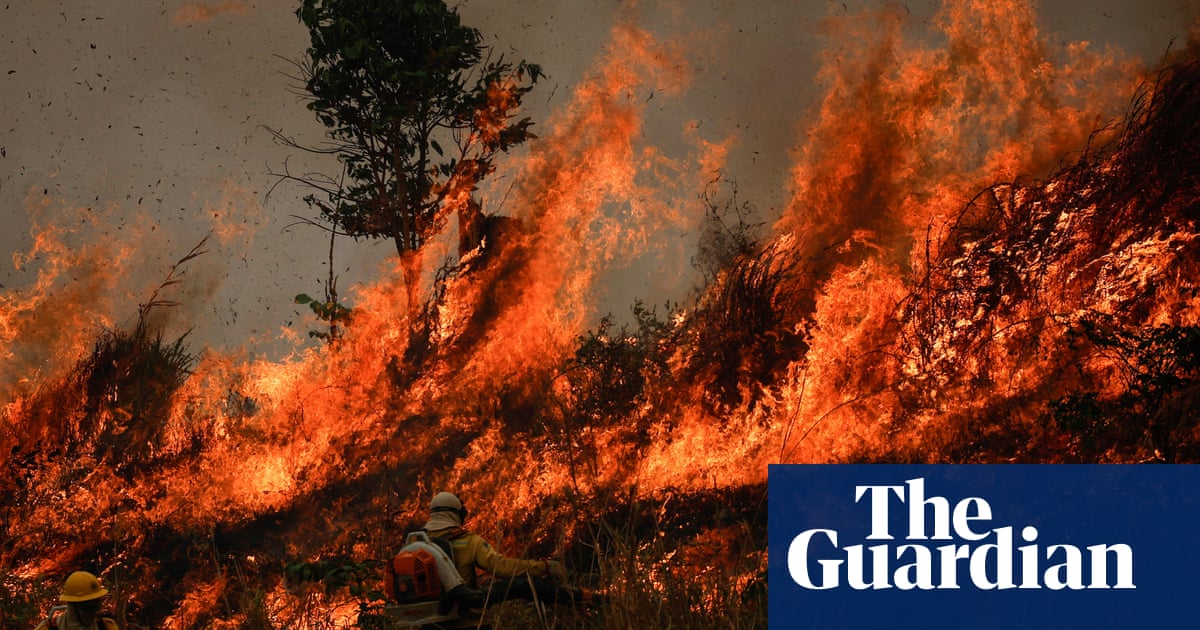The destruction of the world’s forests reached the highest level ever recorded in 2024, driven by a surge in fires caused by global heating, according to “frightening” new data.
From the Brazilian Amazon to the Siberian taiga, Earth’s forests disappeared at a record rate last year, losing an area the size of Italy to agriculture, fires, logging and mining, according to analysis from the University of Maryland hosted onGlobal Forest Watch.
In tropical regions, home to the most biodiverse and carbon-dense forests on the planet, fire became the leading driver of loss for the first time since global records began. However, fire is not a natural part of tropical ecosystems. Boreal forests in Canada and Siberia continued to burn last year.
Prof Matt Hansen, co-director at the University of Maryland’s Glad Lab, who led the analysis, described the new figures as “frightening”, while Elizabeth Goldman, co-director of Global Forest Watch, said the update was “unlike anything we’ve seen in over 20 years of data”.
In 2024, forest loss inBrazilreached rates far above any level recorded under the far-right president Jair Bolsonaro, fuelled by fire and the worst drought on record in the Amazon. The country accounted for 42% of all primary rainforest loss in the tropics, losing more than 25,000 sq km (10,000 sq miles). The data differs from Brazil’s official statistics, which uses a different definition of deforestation that does not include fire.
InBolivia, the loss of previously untouched forest continued to rise, ranking second behind Brazil in overall loss for the first time, driven by drought, fire and government policies promoting agricultural expansion for soya, cattle and sugar cane. The loss of Bolivia’s primary forest has increased nearly fivefoldsince 2020, reaching more than 14,000 sq km (1.4m hectares).
In theDemocratic Republic of the Congo(DRC) and Congo-Brazzaville, loss of pristine rainforests reached the highest levels recorded. The countries are home to the Congo basin rainforest, the world’s second largest after the Amazon.
At the Cop26 climate conference in Glasgow, more than140 world leaders pledged to halt deforestationby the end of the decade, but less than four years later countries are way off track: forest loss must fall by 20% a year from 2024 levels to meet the target by 2030.
“The signal in these data is particularly frightening,” said Hansen “Rising global temperatures are making forests hotter and drier, and as a result, more likely to burn. Given human ignition, even remote rainforests can burn uncontrolled.
“We have a lot of work to do to confront such a widespread, destructive and increasing fire dynamic.”
Goldman called the record-breaking losses “a global red alert”.
She said: “[It is] a collective call to action for every country, every business and every person who cares about a livable planet. Our economies, our communities, our health – none of it can survive without forests.”
Of the 20 countries with the largest areas of pristine forest, 17 are now losing trees at a faster rate than when the 2021 Glasgow deal was signed.
But despite the record loss, there were areas of hope. The loss of primary forest in Indonesia and Malaysia remained relatively low, with the latter dropping out of the top 10 for the first time.
Prof Peter Potapov, co-director of Maryland’s Glad Lab, said the world risked entering a dangerous new cycle.
“2024 was the worst year on record for fire-driven forest loss, breaking the record set just last year. If this trend continues, it could permanently transform critical natural areas and unleash large amounts of carbon – intensifying climate change and fuelling even more extreme fires.
“This is a dangerous feedback loop we cannot afford to trigger further,” he said.
Find moreage of extinction coverage here, and follow the biodiversity reportersPhoebe WestonandPatrick Greenfieldin the Guardian app for more nature coverage
